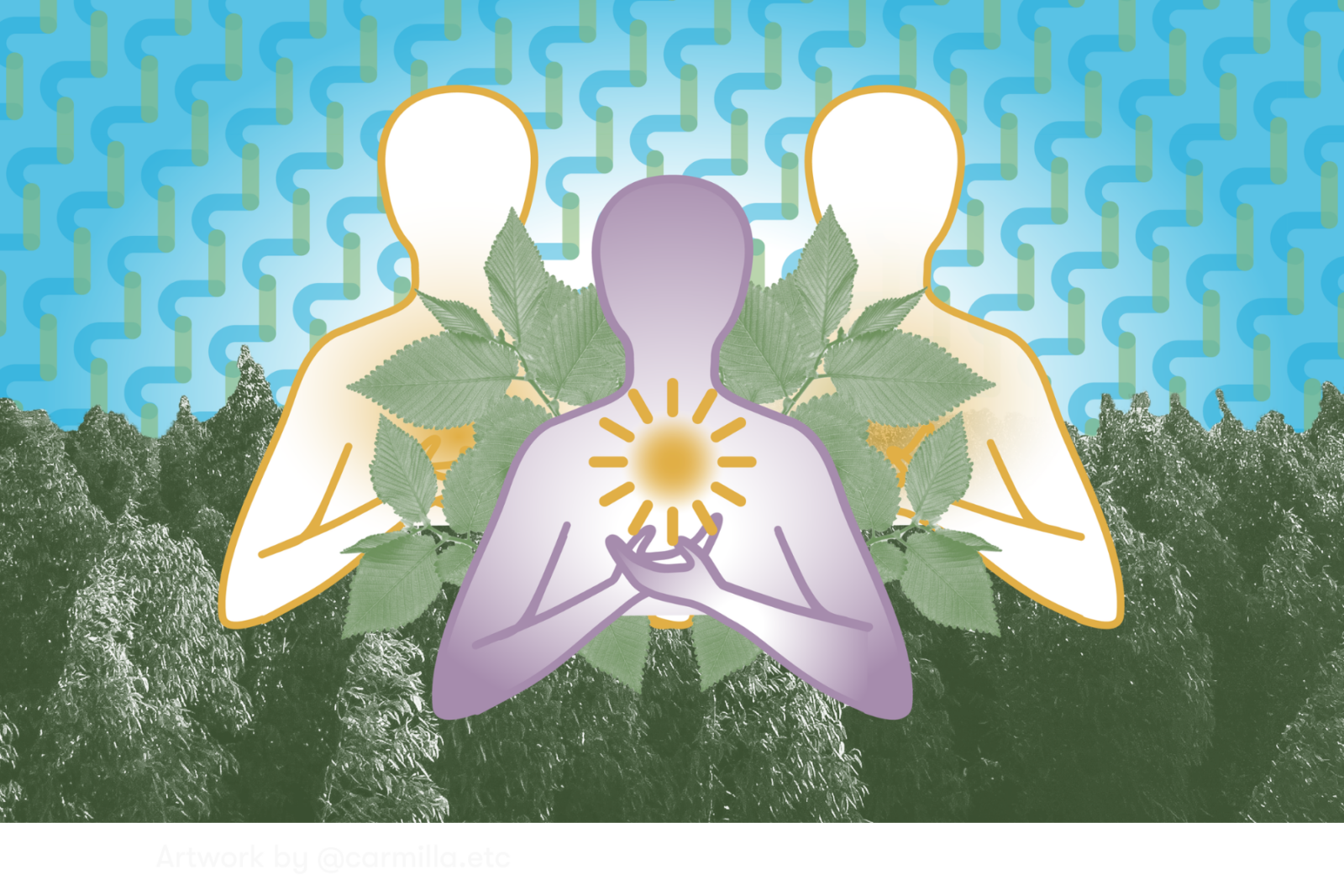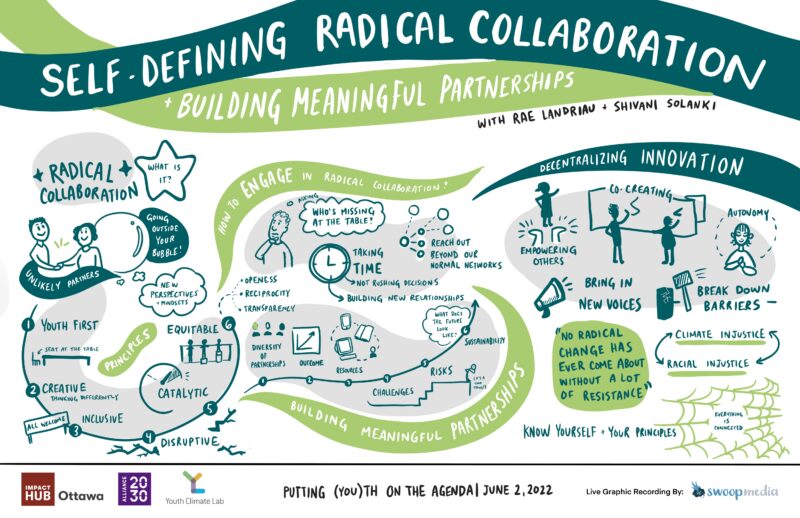
What is Radical Collaboration and Why Does it Matter?
This spring we hosted a learning series called “Putting Youth on the Agenda” in partnership with Alliance 2030, Community Foundations of Canada, and Youth Climate Lab’s RAD Cohort. We heard from inspiring young people about youth-led, collaborative climate action toward the United Nations (UN) Sustainable Development Goals. In the final event, we heard from Rae Landriau (Create Change Collective) and Shivani Solanki for a thoughtful discussion on radical collaboration.
Let’s get the elephant out of the room. When you hear radical, what comes to your mind? Whatever your definition of radical is, it’s probably right. It can be groundbreaking, it can be daunting, it can be extreme, and it can also be transformative. But how can we channel the idea of radicalism into our work?
In the final event in a learning series called “Putting Youth on the Agenda”, we were joined by Rae Landriau and Shivani Solanki, both members of Youth Climate Lab’s RAD Cohort, for a workshop and discussion on what radical collaboration is and why it matters.
“Radical collaboration is based on a key principle from design thinking. It is inspired by the desire to learn from others, and embrace diverse perspectives within the processes of problem-scoping, idea generation, solution finding, and innovation. This is just one way that radical collaboration can be defined,” says Rae.
There are many ways people can work with concepts like this in their work, but it’s also important to customize it to include personal and lived experiences, and how we would like to live out those values and principles. When workshop participants were asked what radical collaboration meant to them, we saw some interesting results. From working with new or unlikely partners to learning new perspectives and embracing new mindsets, people were saying that radical collaboration comes from a shift in perspective and thinking about how we do our work.
When asked what makes collaboration radical in the first place, participants said working with unlikely partnerships helps challenge organizations to create change in new and innovative ways. “I think that’s really important,” says Rae, “especially when we’re looking at radical collaboration. You know you want to create change, and that means moving away from what we know.”
But it’s important to remember that the foundation of radical collaboration starts with core principles. Principles like trust, transparency, reciprocity, openness, and respect are all critical especially when working with others. Organizations need to be open to new ideas, diverse perspectives and experiences, and be willing to learn and listen to others.
How can organizations apply these principles in their own work to collaborate radically? As Rae puts it, it starts with being open to working with people to achieve a common goal and actively seeking out new opportunities to connect and network with folks. Having an open mind when approaching these discussions is key because the project may not necessarily be something you would have thought of right away. Especially when looking for results that you don’t normally get, it’s important to think and act in ways you don’t normally do.
Collaborating radically also means taking a look around and asking yourself, ‘who isn’t part of this discussion that should be?’ This is about prioritizing inclusivity and equity in how understanding and designing solutions to address challenges. Working this way, together, helps find new ways of working while also minimizing barriers to participation and creating meaningful connections. People have to realize – and be given opportunities to exercise – the collective power they have to bring about change in their communities.
That power comes from taking time and not rushing to conclusions or decisions but instead focusing on building meaningful partnerships with the people you’re trying to serve. This starts with defining and understanding your organization’s values, principles, and goals are, and doing the same for possible partners.
“Having open conversation about your goals from the start is extremely important so both organizations know where they’re starting and having that to help each other to move forward,” says Shivani.
And when organizations come together with aligned goals and principles, it makes it possible to radically collaborate and have a meaningful outcome.
When engaging in radical collaboration and forming these meaningful partnerships, there are a few additional factors to consider. First, make sure you have a diversity of partnerships and that you are leveraging them to move beyond your norm and past activities to see growth. The second is exploring the possible outcomes to make sure they’re feasible and tangible, including ensuring you have the resources you need to accomplish the tasks at hand.
It’s also important to brainstorm solutions to any challenges that might arise and identify your willingness to take risks. Risk is a big part of radical collaboration and it’s very important to understand, before you start building partnerships, what risks you’re willing to take and which ones you aren’t.
Taking risks can be intimidating but without it, we won’t see the growth and innovation we’re collectively aiming for. Innovation is a large part of radical collaboration, but we need to make sure we’re decentralizing it in our work. Why? According to Shivani,
“Decentralizing innovation diminishes the vertical hierarchy within an organization or collaboration, and it’s where all members that are included within this collaboration have their contributions valued and incorporated equally.”
This type of decentralized innovation looks like co-creating with partners, empowering others, particularly people from equity-deserving groups, and making sure everyone has the opportunity to show and share their strengths. It’s not always easy to work this way but it’s necessary to make space for growth.
No radical change comes without resistance, and that’s okay and even unavoidable. Radical collaboration is a learning process and everyone’s path is different. Radical collaboration is about coming together and empowering each other to do things differently for a more impactful outcome, even if it scares us at first. By supporting each other, we can all find ways to incorporate radical collaboration into our work and create better communities for everyone.
Missed this event? Hub members can find the video recording in the portal to watch at their own pace.
The SDG Hub Learning Series and related stories are made possible with support from our partners:


